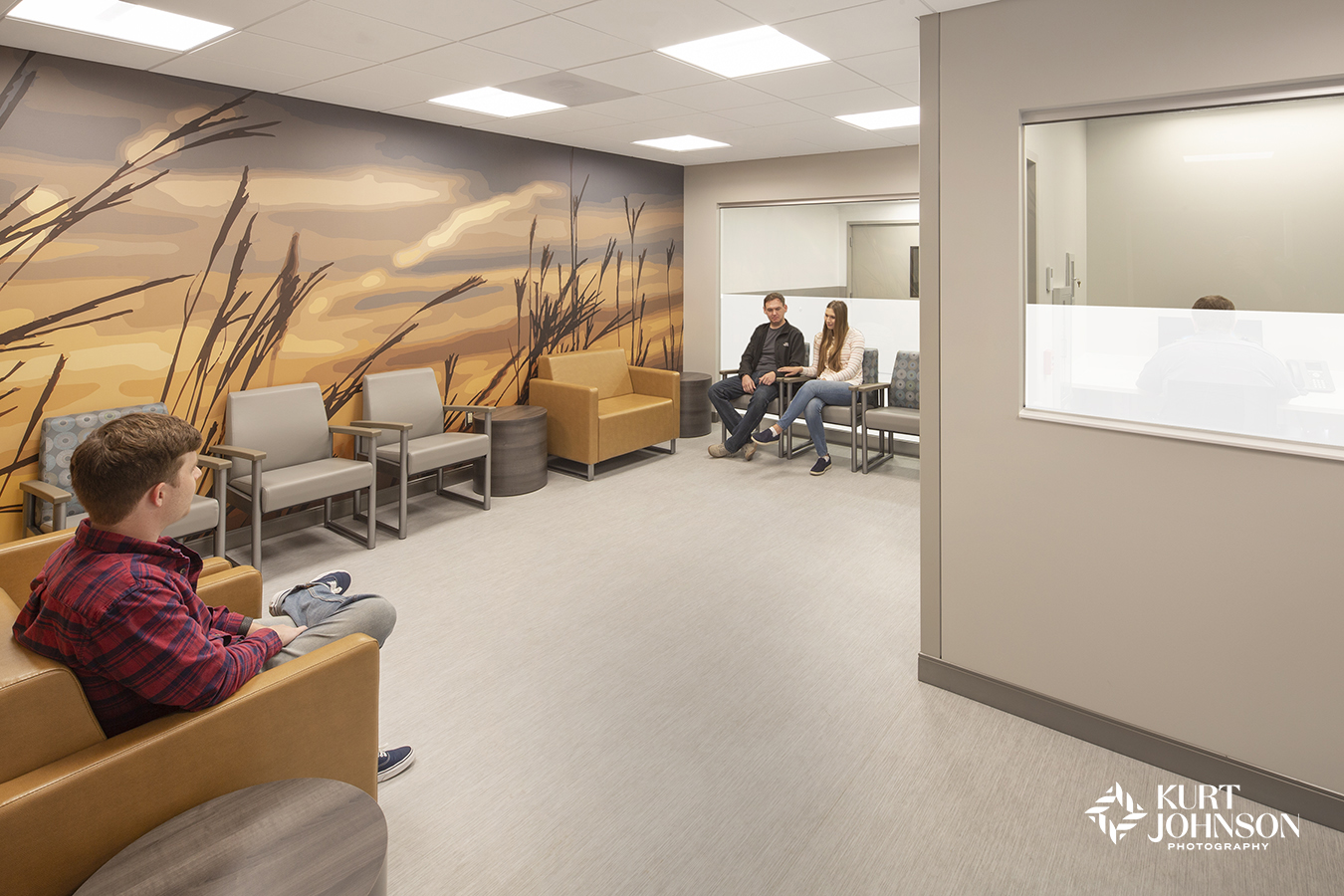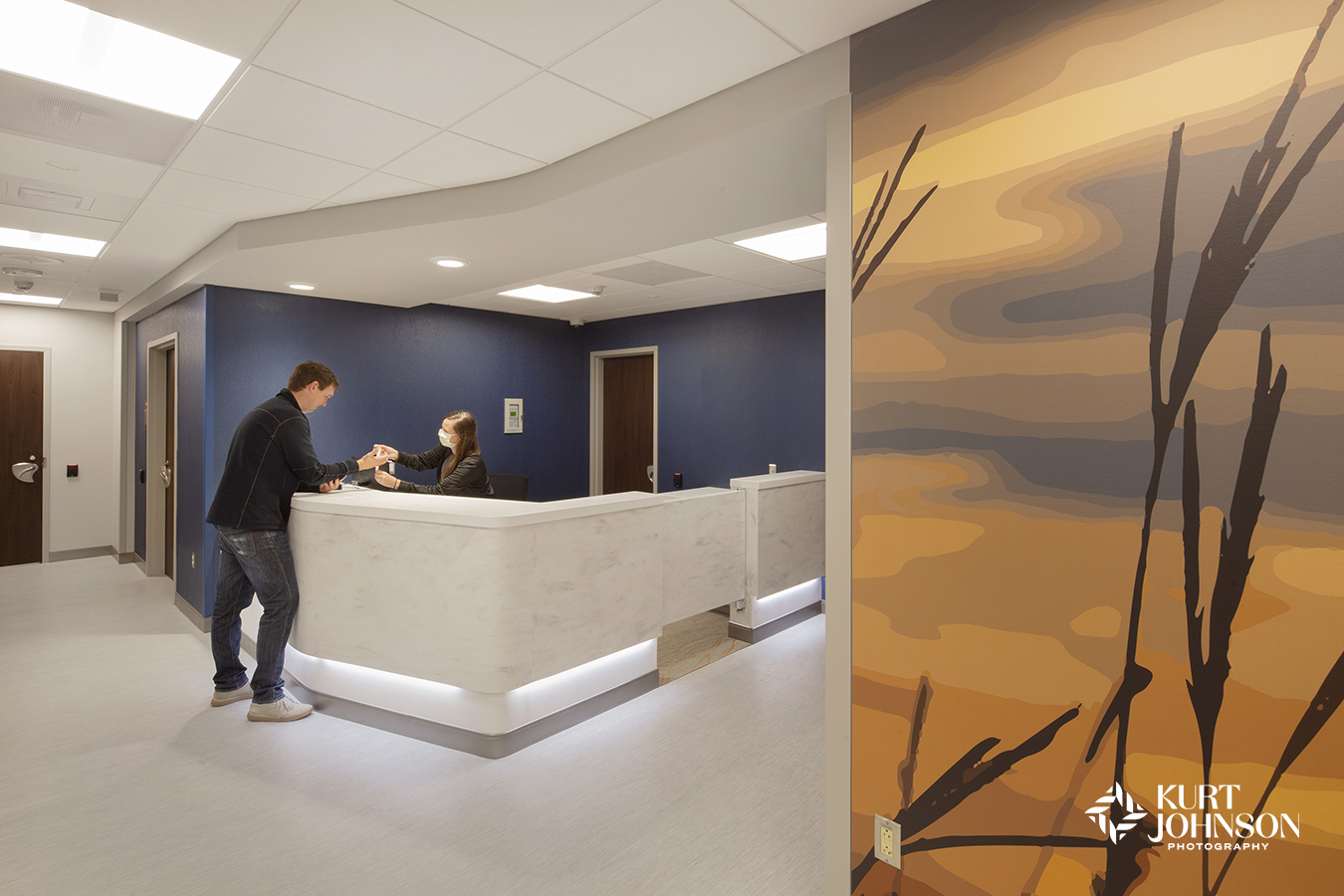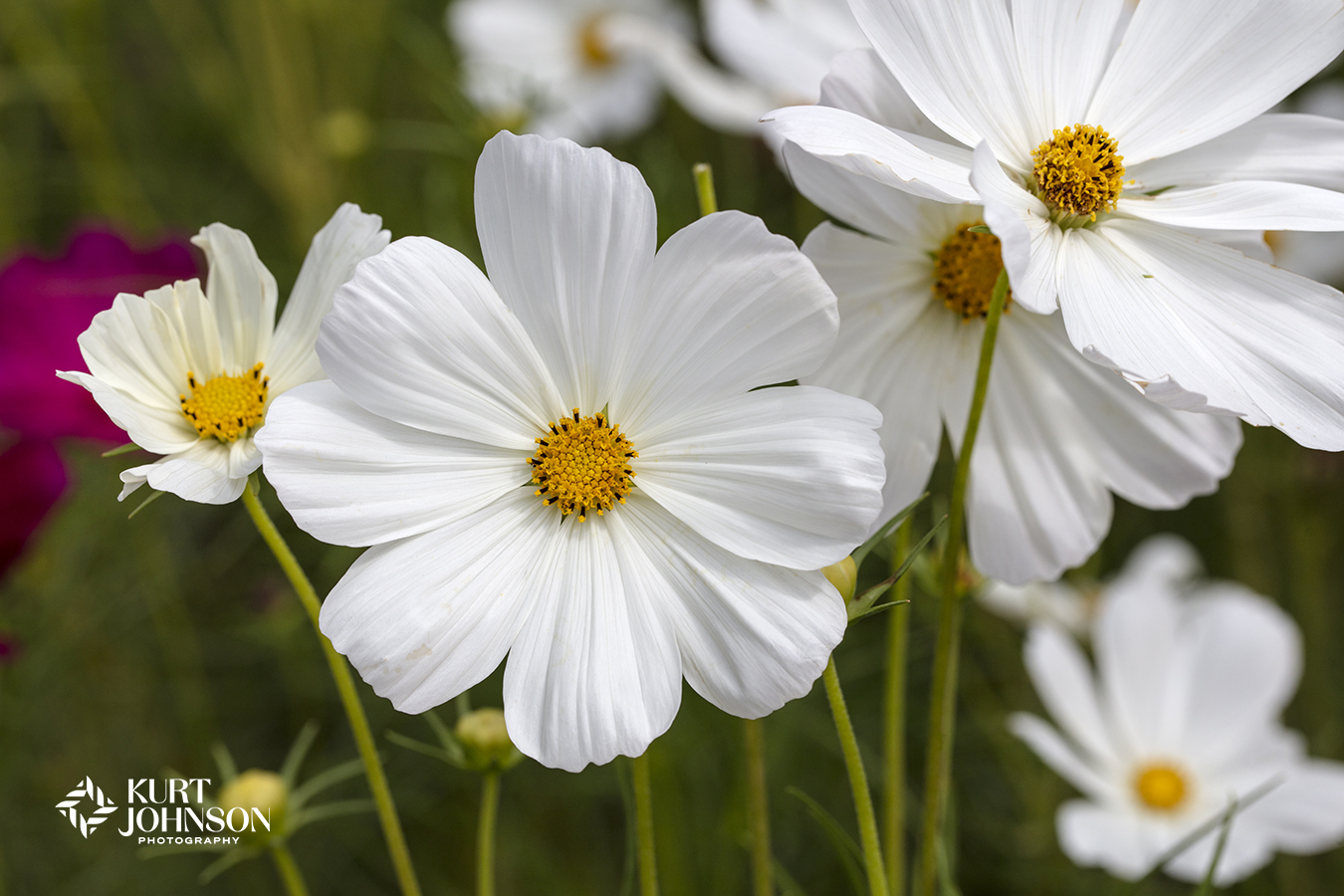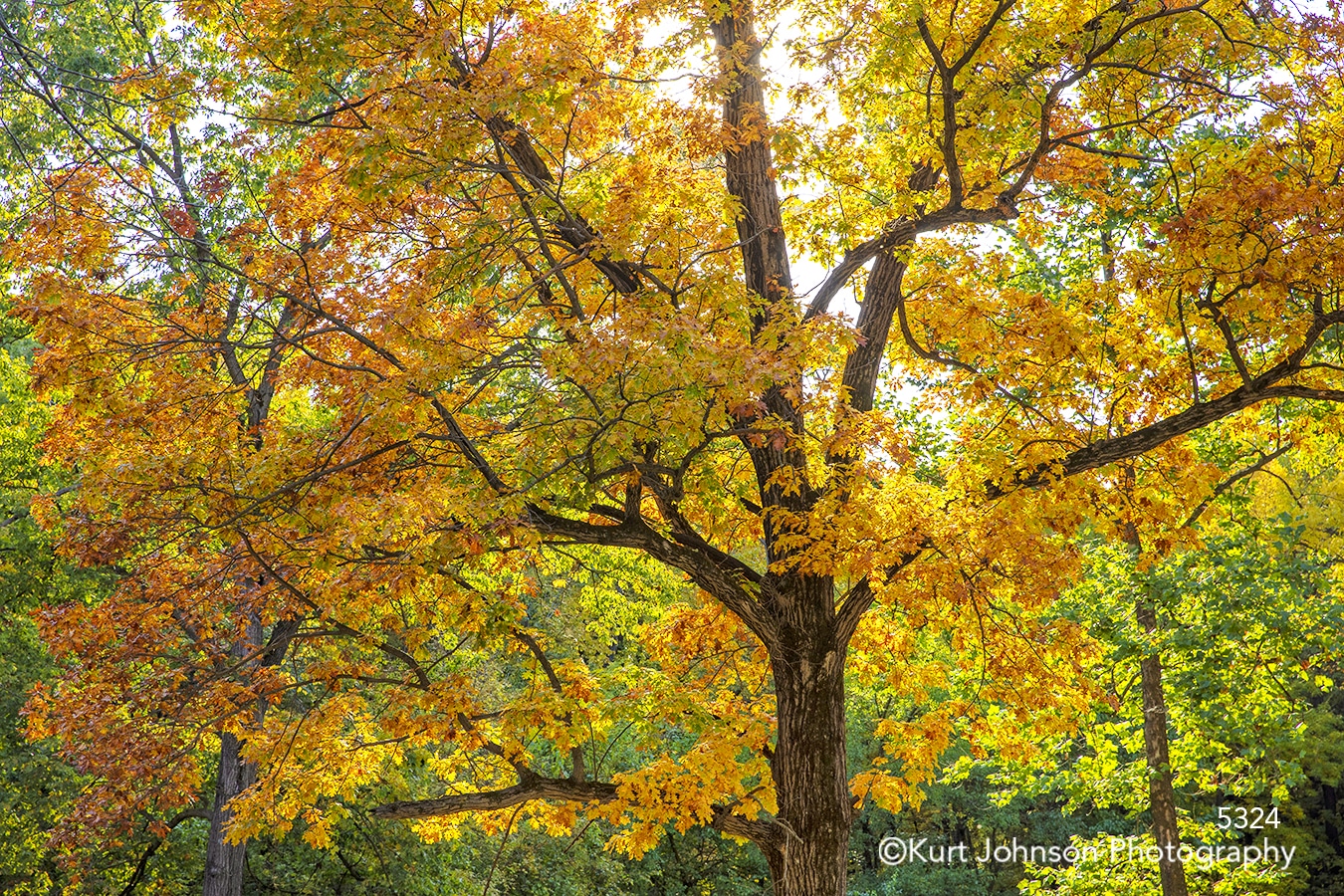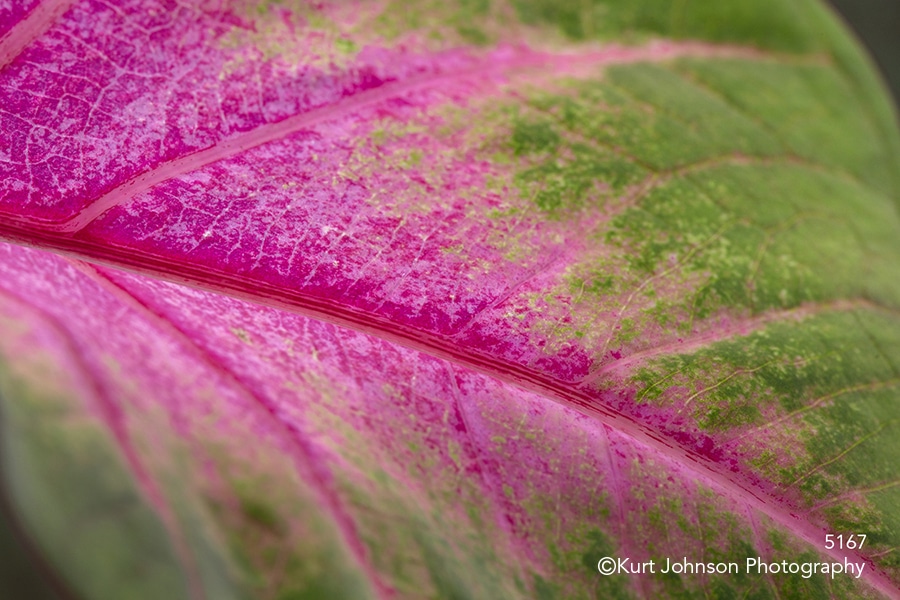Designing for Mental Wellness: Using Nature Art in Behavioral Health
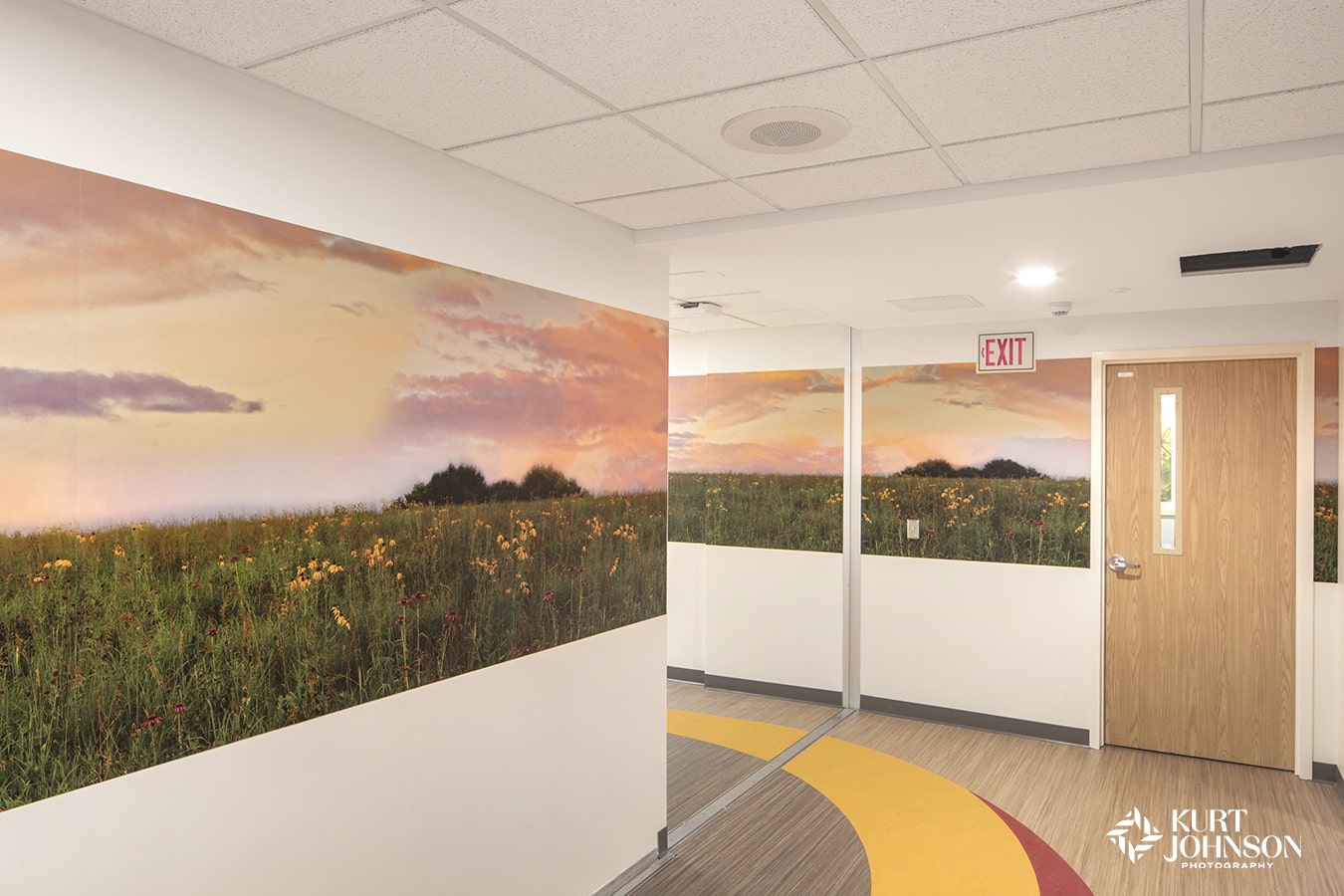
Over the past decade, the demand for behavioral health facilities has grown dramatically, and many providers report being stretched thin to meet patient needs. In fact, Becker’s Behavioral Health indicates 1 in 4 Americans will need behavioral health treatment by 2026.
This rapid growth makes it more important than ever to design spaces that actively support mental health and well-being.
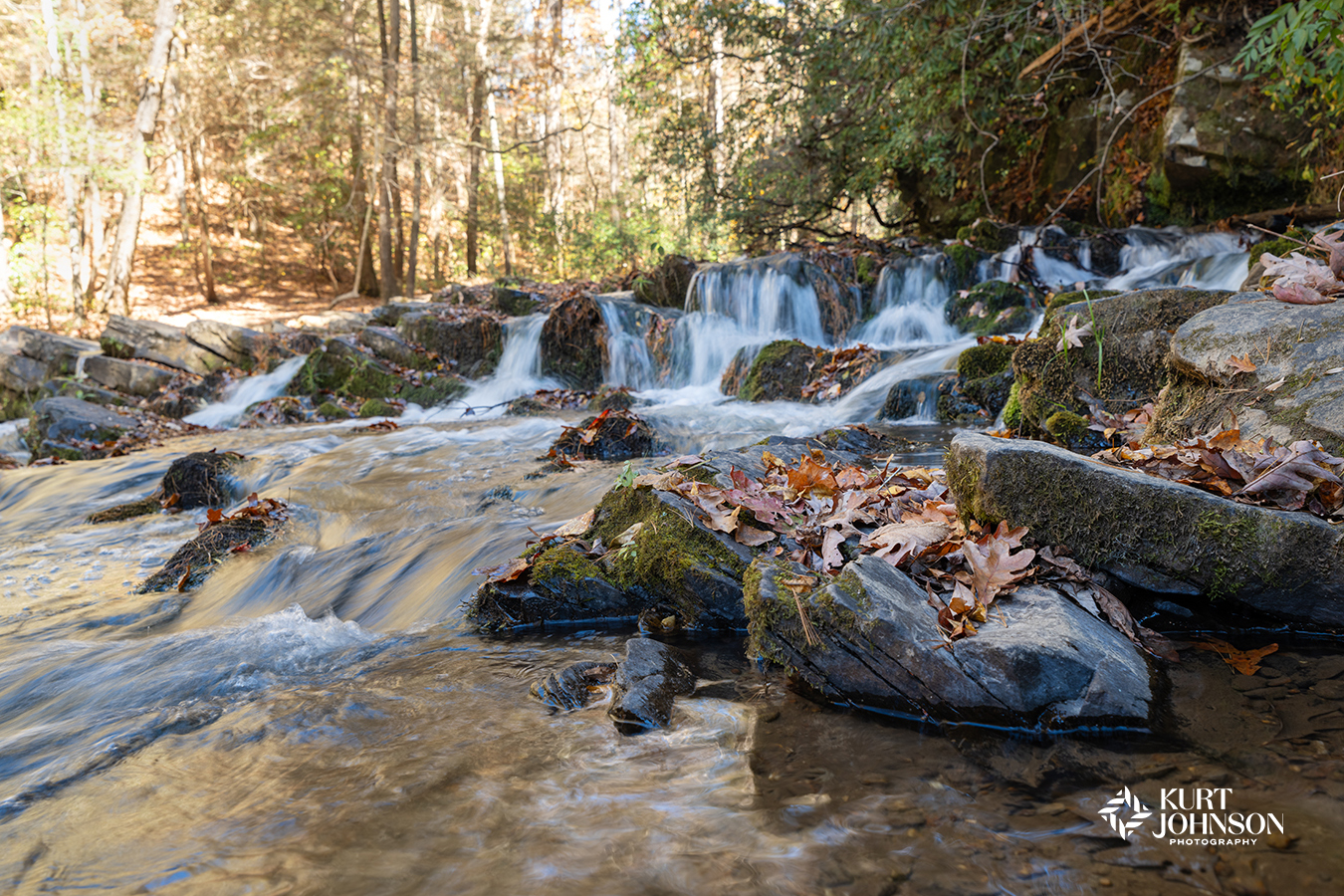
That’s where nature photography comes in. While all healthcare environments benefit from connections to the natural world, behavioral health spaces have unique needs that are important to consider when designing:
- Supporting sensory regulation
- Reducing anxiety
- Balancing safety with therapeutic design
- Avoiding distractions that can be triggering
From public areas like waiting rooms to long corridors and patient rooms, thoughtful use of nature imagery can provide added benefits to those seeking treatment. And incorporating nature art into the overall design has benefits for visitors and staff, too.
Calming Corridors: Reducing Stress in Transitional Spaces
In behavioral health environments, corridors are transition points. Patients often feel uncertainty when moving from one area to another, and nature photography has the power to lessen that anxiety.
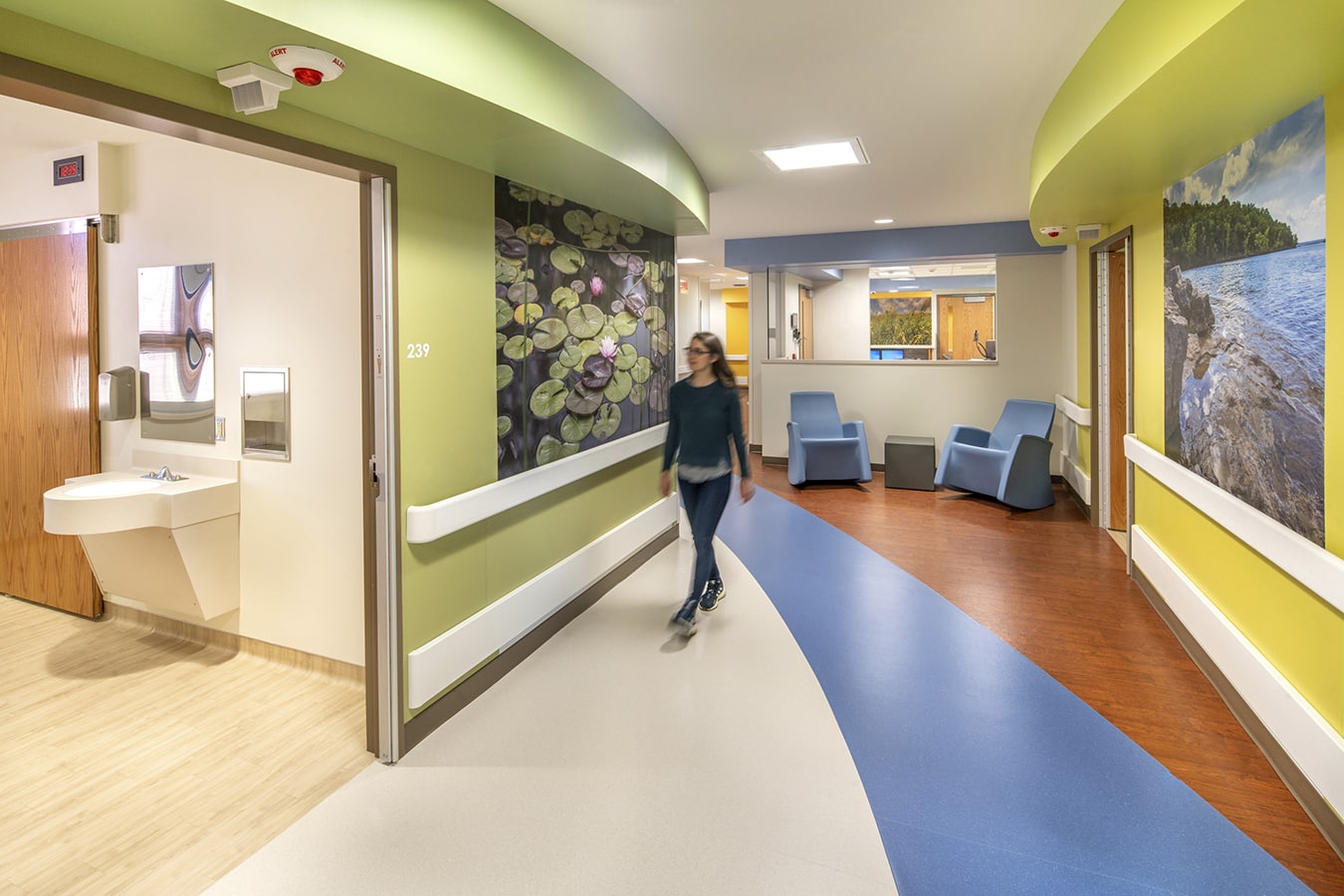
[Missouri Delta Medical Center – Adolescent Behavioral Health, Sikeston, MO. Environmental Graphics by Kurt Johnson Photography. Printed on Koroseal Fusion Wall Protection. Design by Jessica McBride of BSA LifeStructures.]
“Implementing clear wayfinding techniques that draw on patterns of recognition found in nature can reduce disorientation” (Harvey & Silverwood, 2025).
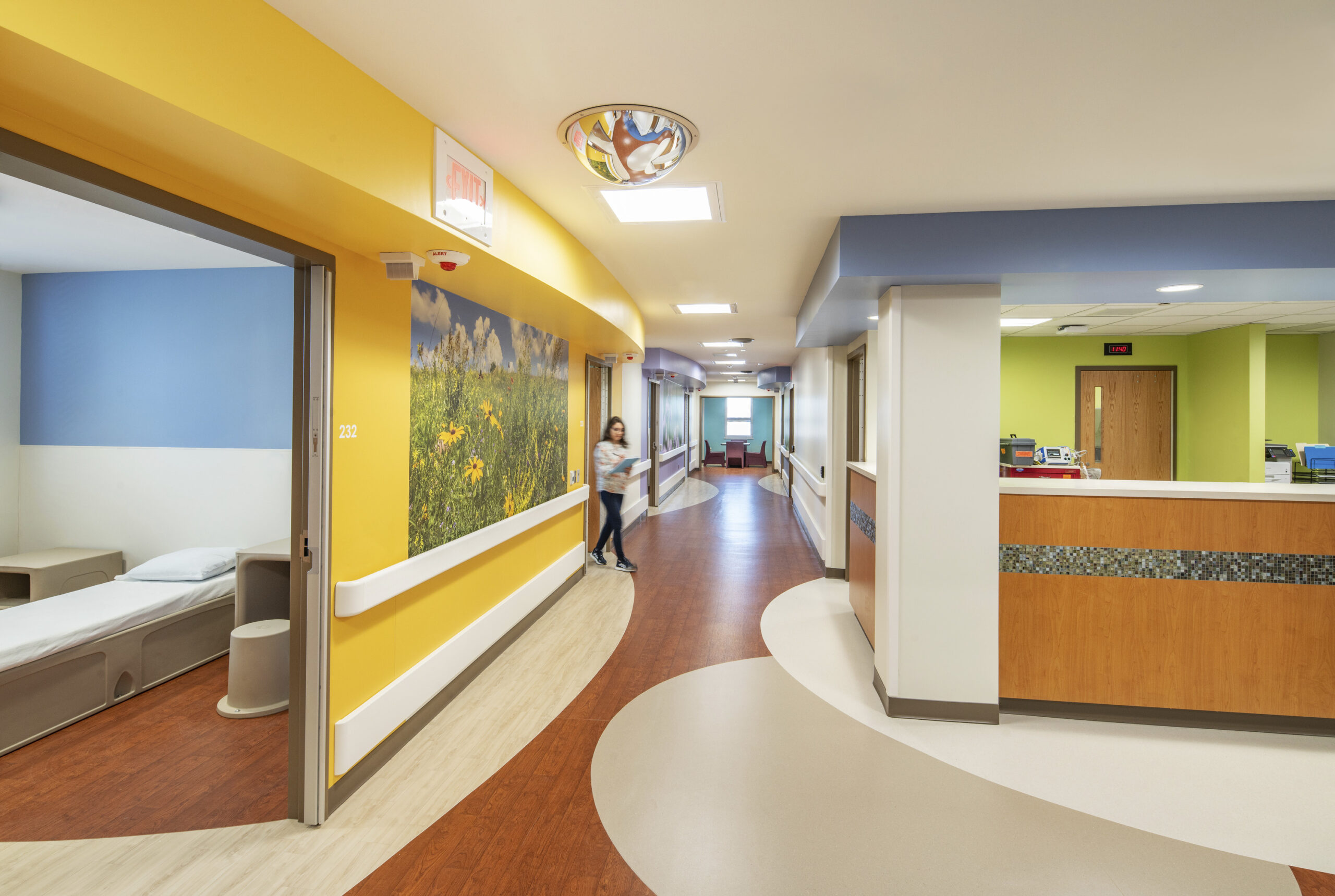
A corridor lined with calming photographs of verdant landscapes, flowers, welcoming forests, or soothing waterscapes is less clinical, more human, and easier to move through. Patients can focus on the beauty and calmness of nature rather than blank walls or confusing art that might agitate.
The art placement at The University of Nebraska Medical Center’s Munroe-Meyer Institute in Omaha, Nebraska, was thoughtfully planned from the very start of construction, making it an integral part of the overall design.
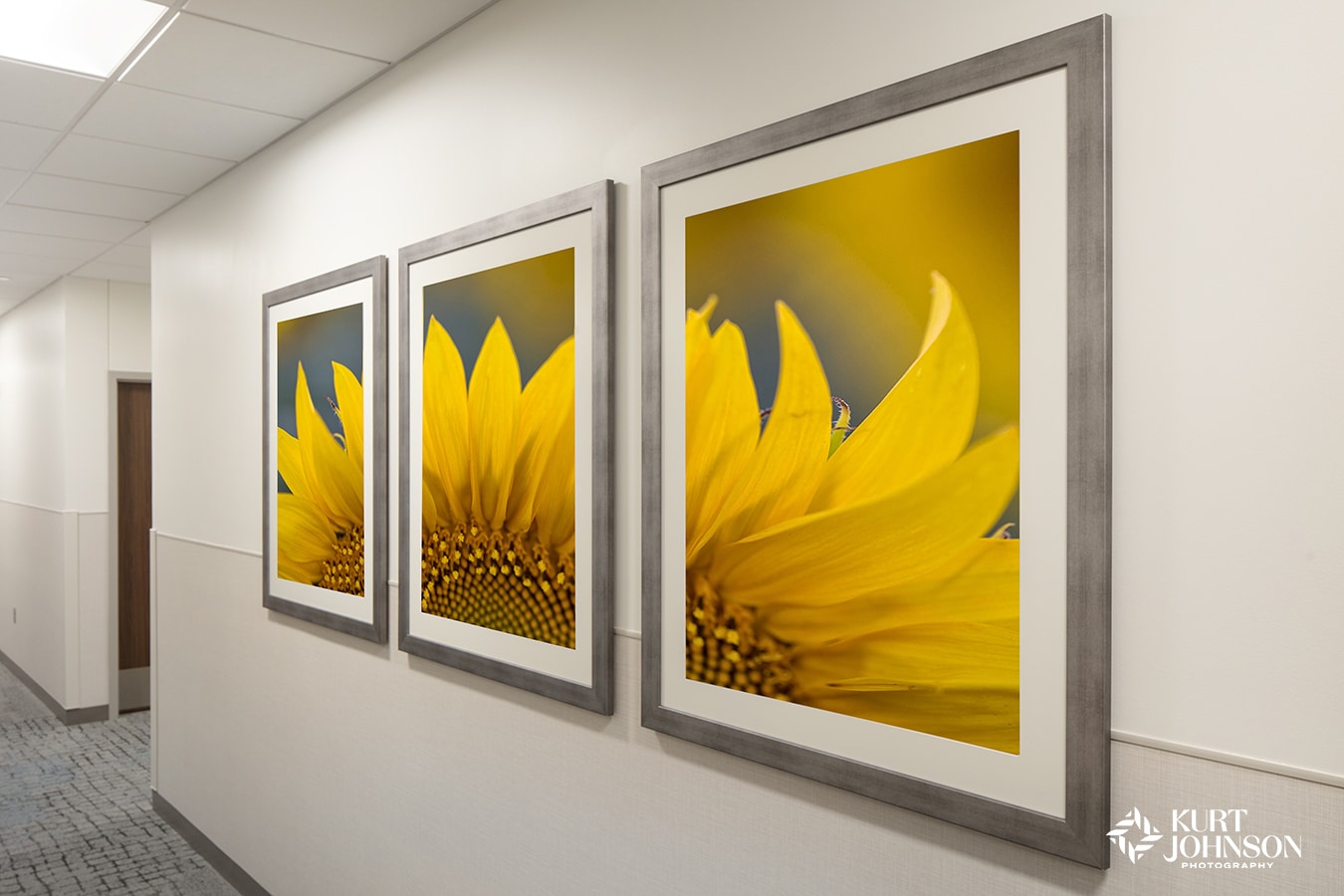
In many areas of this facility, that serves the needs of people with intellectual and developmental needs, one wall features nature photography while the opposite wall is intentionally left blank, giving young patients the choice to immerse themselves in the artwork or take a visual break when needed.
Soothing natural patterns were selected to provide comfort and calm, and certain groupings were arranged in non-traditional ways to resonate with adolescents and patients with autism and intellectual or physical disabilities.
Waiting Areas: Creating Safety and Comfort Before Care
Waiting can be stressful in any healthcare setting, but in behavioral health, it can feel especially vulnerable. Patients may be experiencing fear, stigma, or heightened emotions.

A two-story waterfall image greets patients at Allina Health’s Center for Mental Health and Addiction.
Here, nature art plays a dual role: it not only provides positive distraction but also signals safety.
As Harvey & Silverwood note:
“Biophilic design…has emerged as one of the most promising ways to improve behavioral health spaces because of its ability to reduce stress, support emotional regulation, and foster a sense of safety and connection.”
In the installation at The University of Nebraska Medical Center’s Psychiatric Emergency Services Facility in Omaha, Nebraska, large-scale wall graphics of prairie grasses against a soothing sunset transform corridors and waiting areas into welcoming, biophilic environments.
The expansive imagery softens what might otherwise feel overly clinical, while maintaining the durability and cleanability required in a healthcare setting.
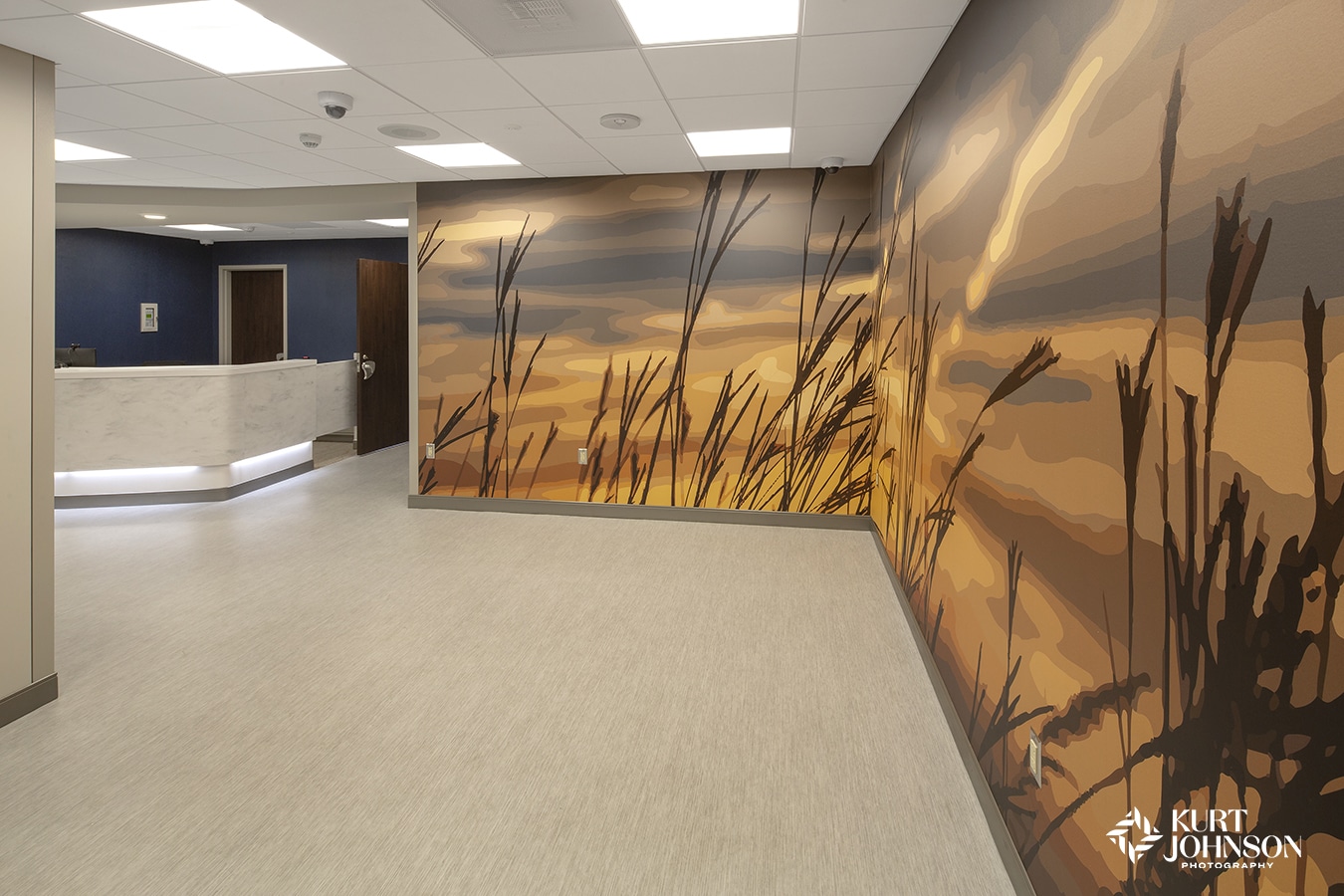
Warm tones and repeating natural patterns were intentionally chosen to ease stress. By integrating healing nature photography directly into the built environment, the design itself becomes a functional tool for supporting behavioral health outcomes.
Patient Rooms: Supporting Rest and Recovery
For patients in behavioral health treatment, the room where they sleep, reflect, and recover is deeply personal. Unlike a medical patient recovering from surgery, behavioral health patients often spend more waking hours in their rooms, processing emotions and engaging in therapeutic work.
Nature art helps create a sense of refuge. Instead of blank walls, carefully chosen photographs serve as visual anchors patients can return to during difficult moments. Subtle patterns, familiar landscapes, or calming colors can reinforce calming techniques that therapists may be teaching, turning the environment itself into an active partner in care.
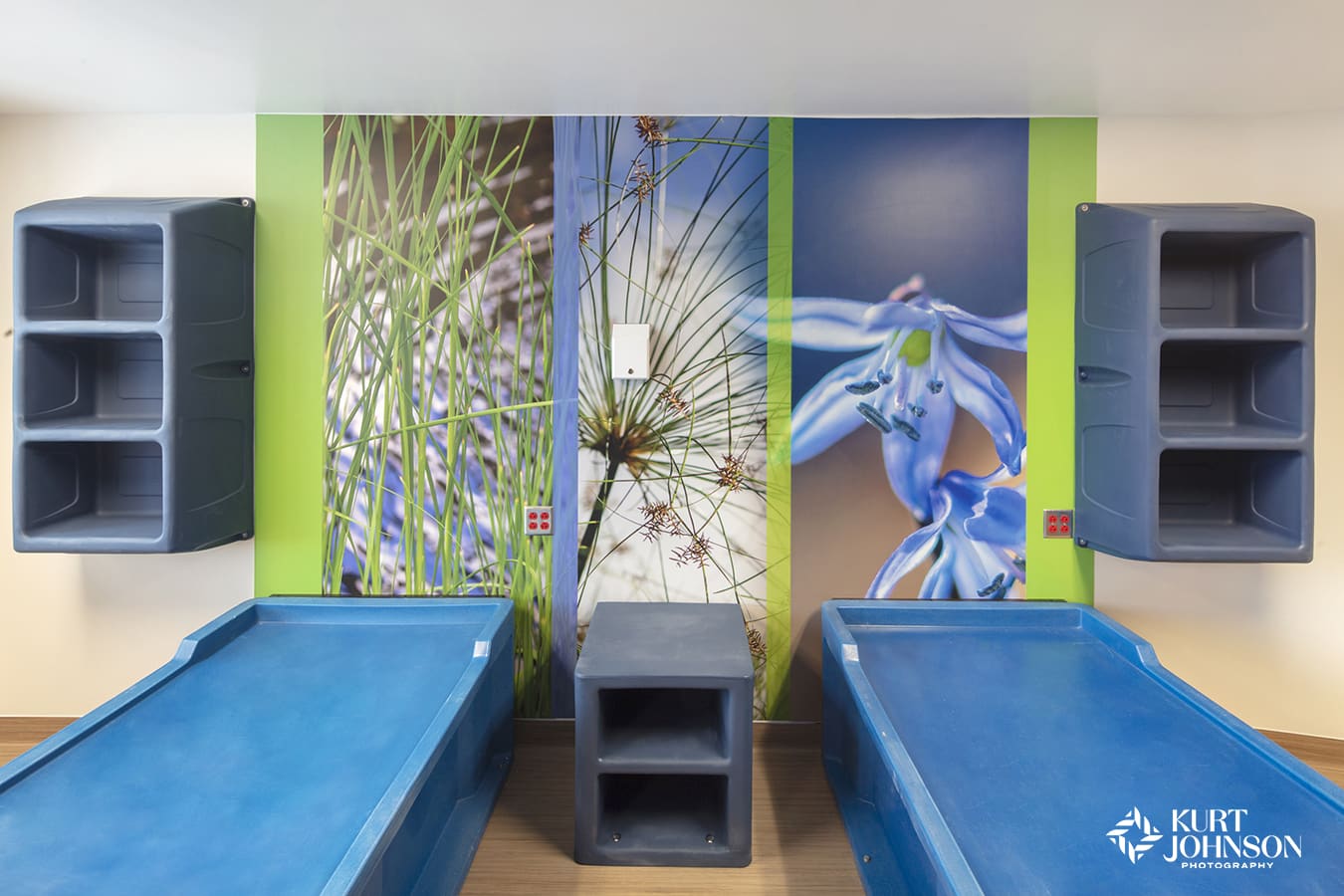
A wallcovering printed by Koroseal brightens a patient room at an Allina behaviroal health clinic in MN.
The color slice above the bed at Allina Health’s Mental Health United Clinic in Minnesota features calming elements and textures perfect for the healing journey.
As the HCD article goes on to explain:
“When designers create environments that help patients maintain their physical equilibrium, the person’s cognitive state receives less strain, which ultimately reduces the likelihood of self-harm, aggressive behavior, or emotional outbursts.”
Staff benefit too, as calmer environments support safer, more positive interactions. Over time, this design approach contributes to a culture of healing, where patients feel supported and staff feel empowered in their work.

Beyond Beauty: Why Nature Art Works
This isn’t just about pretty pictures (although that’s part of it too!). Nature photography speaks to something deeper in our DNA. As HCD Magazine highlights, biophilic design approaches reduce stress, support emotional regulation, and promote feelings of safety and connection.
In behavioral health, especially, these are essential elements for creating safe, healing environments.

As the demand for behavioral health care continues to grow, so does the responsibility to create environments that heal. Nature art is one of the simplest, most effective ways to bring warmth, safety, and healing into these spaces.
Because at the end of the day, it’s about supporting people on their journey toward hope and recovery. And even something as simple as nature imagery can go a long way to providing long-lasting support and care on the road to healing.
Categories: Healing, Healthcare, Research


